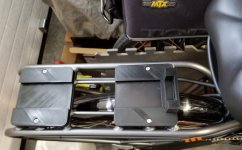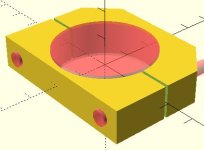formula101 said:
You're looking for a bike that you can ride at 20 to 25 mph, so you buy a class2 bike that tops out at 20 mph, then complain that the bike is too slow.
Yeah, the bike is not the problem here. smh.
Personal attacks are against ES rules. Let's keep this civil.
The bike is not for me. I have six other ebikes, and I no longer commute. These are "goals". Not absolute requirements. I don't believe I've ever said that 20 on the flat was inadequate for this. Bikes are allowed 28 now, so 20-25 is not breaking the speed limit.
We're not looking for a fast ebike, but a solid commuter.
If it would do near 20 mph up a moderate hill my son would not complain (not as much anyway). When it bogs down to 11, he's not too thrilled. This bike goes 24 on the level just fine. The problem is the class rules are pushing makers to build defective products in terms of actual utility. A few years ago we had 1000 watt rules and no classes. The class rules are not built to suit transportation needs.
He just wants to get to work, not go out for a joy ride around town. This is transportation, not a hobbycycle.
If we want ebikes to be the success they should be, they need to meet transportation needs, not just be another hobby purchase that ends up in the trash pile like most bicycles do.
This thread is about our experience with the RadCity, these are the real results of using it for transportation (which is what it is advertised for). For people who don't want to pedal hard and don't want to have to shift there isn't really a better ebike (others are pretty much equivalent). Remember the old steel mountain bike with a DIY motor kit was doing a bit better. My son has gone back to riding his old bike. I guess we should toss this RadCity in the trash if he's not going to ride it. It takes him 10 minutes longer to get to work because it goes so slowly on the hills, and the traffic is more dangerous when the speed differential increases and more cars go by.
You are right about one thing, the bike is not the problem. The rules are the problem. They create more dangerous riding conditions by artificially slowing down ebikes. If they're allowed to go 20 or 28, then they should be able to do so, regardless of gradient or rider weight.
In this (my) thread let's focus on the RadCity and what we can do to improve it for commuting, which after all is it's intended purpose, according to RadPowerBikes marketing.



